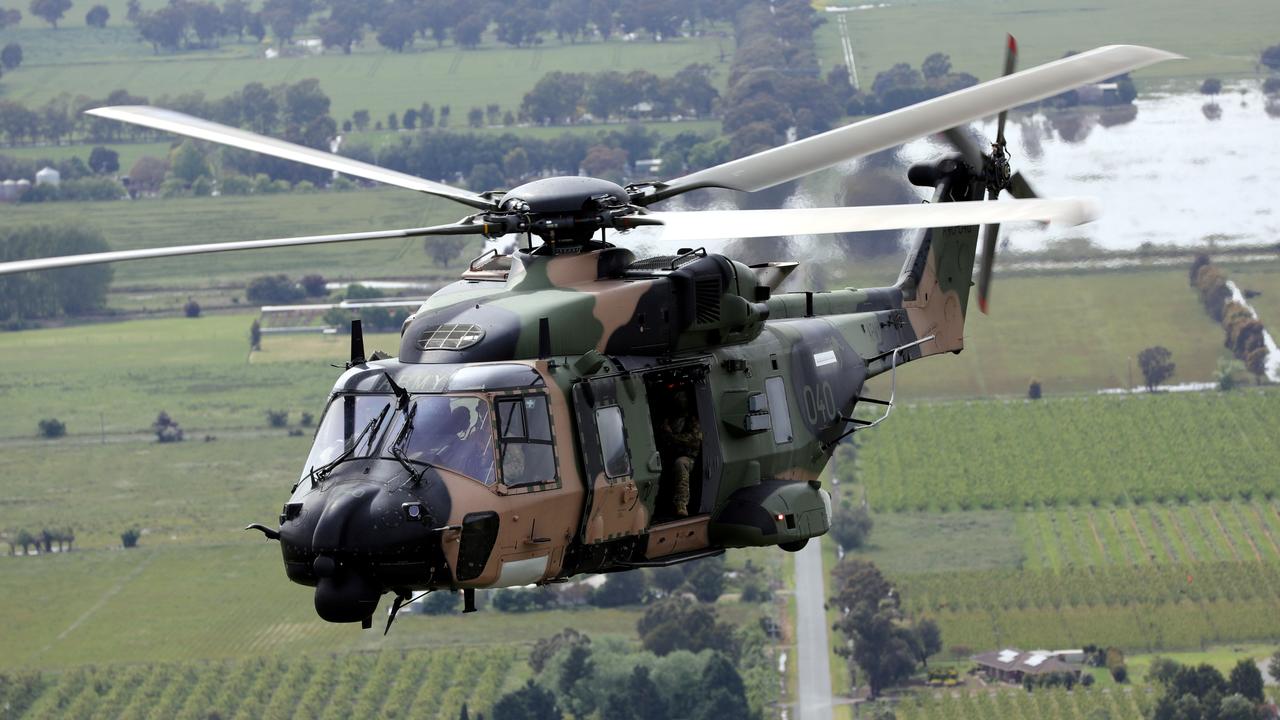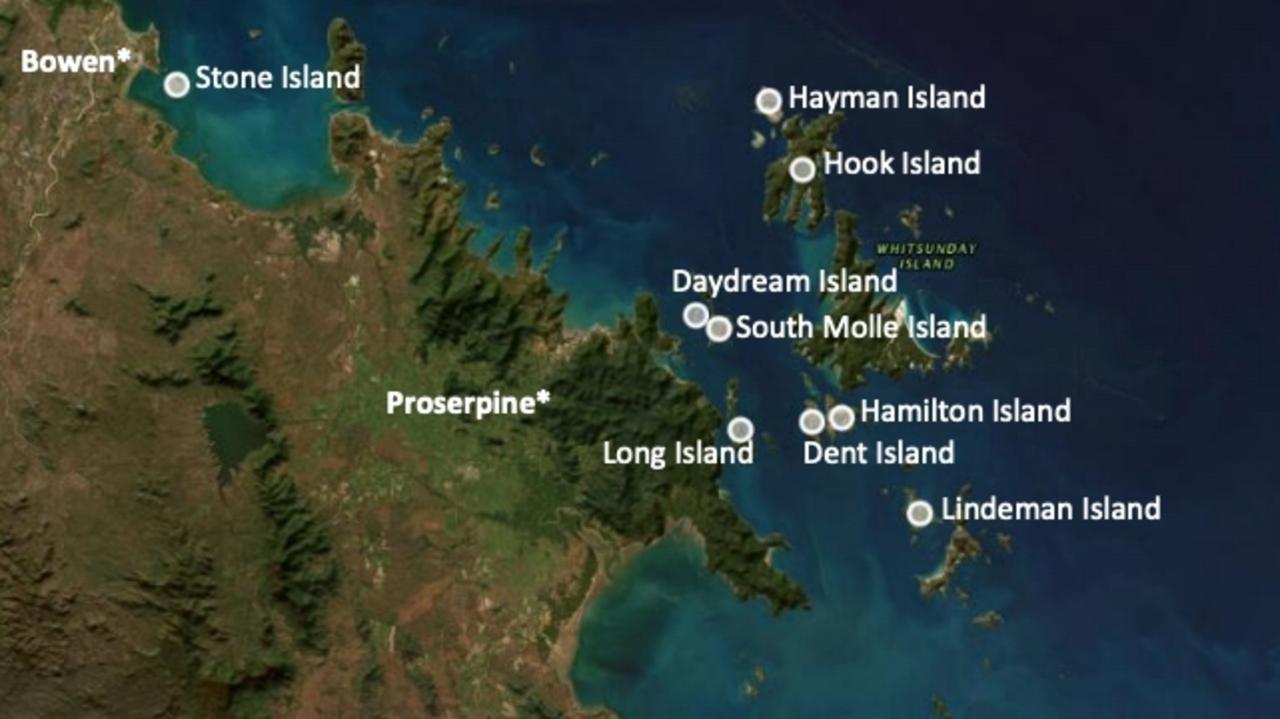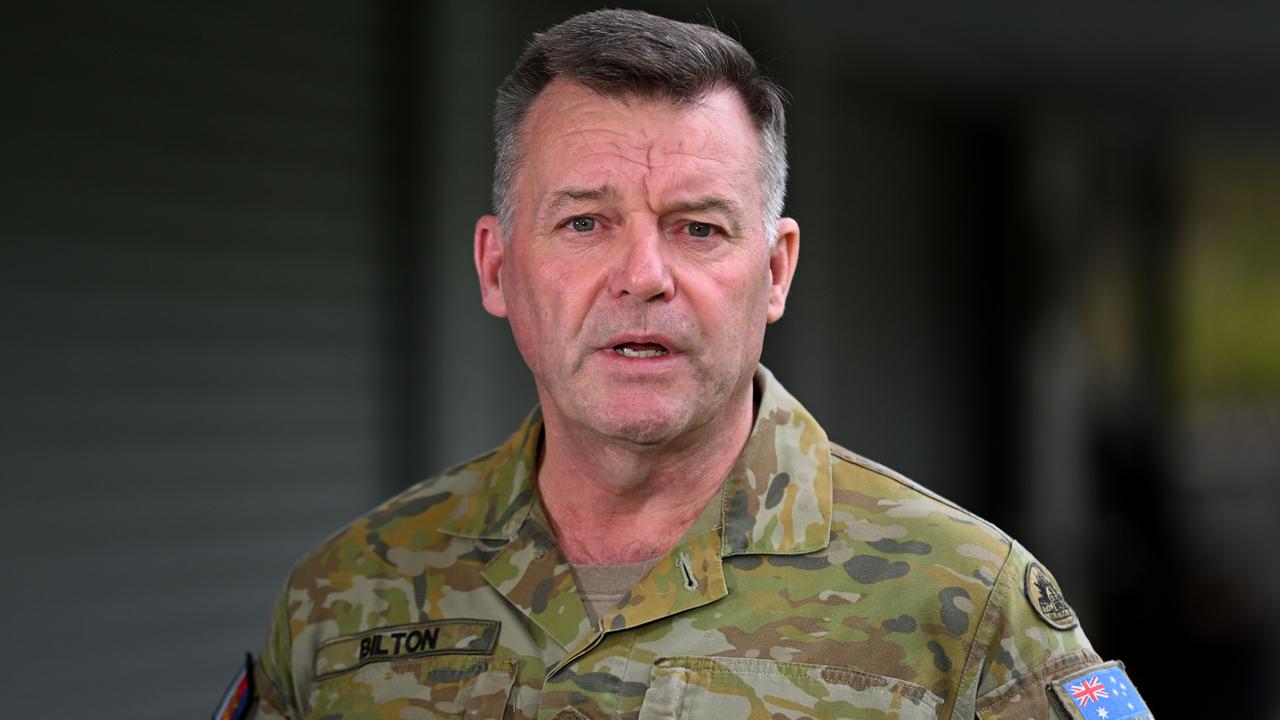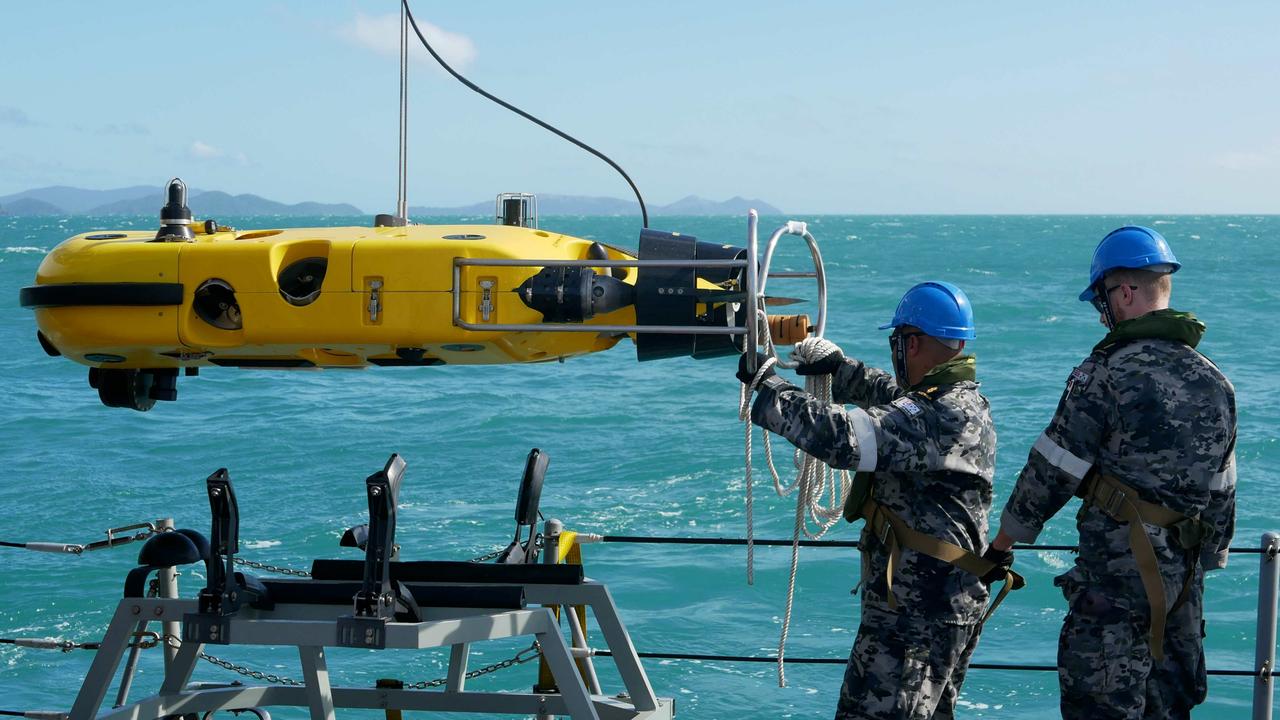One week on: What we know from the Talisman Sabre catastrophe
There’s still a long way to go before we understand what happened on the tragic night of July 28, but here’s what we know one week on from the Talisman Sabre catastrophe.
Late in the night on July 28, an MRH-90 Taipan helicopter ditched into the waters off North Queensland during the multi-nation Talisman Sabre military training exercise, taking the lives of four Australian soldiers.
Australians are reeling and the Australian Defence Force Taipan helicopter fleet has been grounded.
Here is what we know so far and what the future holds for the troubled choppers.

What happened?
On July 28, just after 10.30pm, an MRH-90 Taipan helicopter ditched into waters close to Hamilton Island in North Queensland’s Whitsundays region.
The four-crew helicopter was engaged in a two-helicopter mission, part of Australia’s biennial Talisman Sabre training exercise between the ADF, the US military and other partner nations.

An extensive search and rescue mission commenced immediately following the crash.
Who was lost?
Four soldiers from the Army’s 6th Aviation Regiment:
Captain Danniel Lyon, Lieutenant Maxwell Nugent, Warrant Officer Class 2 Joseph Phillip Laycock and Corporal Alexander Naggs
Australians are reeling from the catastrophe.
On July 30, Prime Minister Anthony Albanese paid tribute to the soldiers and the risks Australia’s service personnel carry to defend the nation.
“This is a stark reminder that there are no safe or easy days for those who serve in our country‘s name,” he said.
“These Australians were taking part in Exercise Talisman Sabre, bringing together 13 nations and up to 30,000 personnel.
“An exercise dedicated to deepening international co-operation and building a more peaceful and secure world, serving their country and serving the cause of peace.
“There is indeed no higher calling. All Australians owe a debt to the brave men and women who wear our uniform and serve in order to protect our way of life here in Australia.”
The families of the four soldiers have released statements paying tribute to their loved ones.
Captain Lyon has been remembered as a “beloved husband, devoted father of two and great mate”.
“Danniel’s smile could brighten even the darkest days. His light shone so brightly we cannot imagine a world without it,” his family said.
Lieutenant Nugent has been remembered as a man who “expressed his love for others through acts of service”.
“Our Max fitted so much living into his 24 years. He got to live his dream. He loved flying, and Army life was everything he hoped it would be. He was straight as an arrow, stubborn, reliable, hilarious, generous and a radiant light in our lives,” his family said.
Warrant Officer Class 2 Laycock has been remembered as a “devoted father” to his three sons.
“We have been left devastated by the loss of our son and extend our most heartfelt sympathies to the loved ones of Phillip’s crewmates,” his parents said.
Corporal Naggs has been remembered as “a beloved partner, son, brother and friend.”
“Alex was a hardworking, generous and kind man who was always there for his mates,” his family wrote.
“Alex was an inspiration to his family and those around him. We are heartbroken to lose him so soon.”
If you are a current or former service member experiencing stress following this tragedy, please contact:
- The Defence Member and Family Helpline – This is the first point of call for Defence members and families seeking support, information or connection with their community. They can be reached 24 hours a day, seven days a week on 1800 624 608.
- Open Arms veterans and families counselling – Free and confidential counselling and support for current and former serving ADF members and their families. They can be reached 24 hours a day, seven days a week on 1800 011 046 or visit the Open Arms website for more information.
The recovery effort
Massive resources have been allocated to recover the wreckage of the helicopter and to locate the remains of the dead soldiers.
Since Friday night, the ADF and Queensland’s emergency services have directed a continuous and co-ordinated maritime and air search and rescue mission in the Whitsundays region involving more than 800 personnel.
HMAS Adelaide, HMAS Brisbane and USS Miguel Keith were deployed to the search, along with specialist divers.
Royal Australian Navy sailors from HMAS Huon have been conducting search operations near Lindeman Island.
HMAS Huon is a Huon class minehunter coastal, with underwater sensor, sonar detection, clearance diving and remotely-operated vehicle capabilities.
On August 2, the Huon’s remotely operated underwater vehicle discovered parts of the cockpit and human remains close to the crash site.

“The debris field is consistent with a catastrophic high impact,” Lieutenant General Greg Bilton said in Brisbane on August 3.
“Sadly, I can confirm unidentified human remains have also been observed in this location by the remotely operated underwater vehicle.
“Due to the nature of the debris field, positive identification of the remains is unlikely to occur until we recover more of the wreckage.”
Recovery efforts have been hindered by a range of factors, including poor weather and the complexity of the mission.
“While we continue with the recovery as best we can, poor weather conditions have continued to impact our search efforts,” Lt General Bilton said.
“The weather is expected to remain challenging until mid-next week.”

Strong currents and waves can move debris away from the crash zone.
At a press conference in Canberra on July 31, Chief of Defence Force General Angus Campbell emphasised the challenges of the operation.
“It‘s in an area of the waters around the Whitsunday Islands where there are quite strong currents and tidal movements and with waters that move below the depths of a standard diving operation,” he said.
“So, this means that we‘ve had to use sonar equipment to identify pieces of the wreckage, but we’ll also have to use divers and some specialist divers to support.
“This activity has been ongoing and will continue. It is also subject to just the standard nature of the weather at the time and of the visibility in the water. It‘s not an easy operation.”
What went wrong exactly?
The cause of the crash is unknown.
Lt General Bilton has said all communications were “normal” before the aircraft impacted the water.
The helicopter’s black box, which logs flight data, has not been recovered and Lt General Bilton said it was not certain it would be found.
“The black box is critical to helping us to understand what‘s actually taken place,” he said.
The Investigation
A multi-agency investigation is under way, though the expected length of the investigation is unknown.
In the meantime, the Taipan fleet has been grounded.
A troubled history
Since their introduction to service in 2007, the Taipans have presented ongoing technical and cost challenges for the ADF.
It is understood Defence planners opposed the original Howard government decision to purchase the choppers.
On multiple occasions, the helicopters have been grounded on safety concerns.
In March this year, the fleet was grounded after a Taipan suffered engine failure and ditched into the water at Jervis Bay in NSW during a counter-terrorism training exercise.
Some two weeks later, the choppers were back in the air.
Following the fatal Talisman Sabre crash, Defence Minister Richard Marles said the helicopters had been certified to fly.
Chief of Army, Lieutenant General Simon Stuart, stressed the Army had assessed the choppers as safe.
“We don’t fly if we don’t think it’s safe and that continues to be the case,” he said at a press conference at Holsworthy Barracks in Sydney on July 30.
When asked why the choppers were still in use despite their troubled history, LTGEN Stuart replied:
“Because we’ve understood those issues and we have worked to ensure that we’ve mitigated those risks.”
‘A very deep tragedy’: Senator Shoebridge calls for transparency
NSW Senator and Australian Greens spokesman for Defence and Veterans’ Affairs David Shoebridge is pushing for more transparency over the decision to keep the helicopters in the air, particularly after the near-fatal Jervis Bay crash.
The Senator said the helicopters were put back into service despite the fact an internal Defence review into the March crash was not expected until October.
“How can they have these helicopters back in the air with defence personnel until they had completed that review themselves?” he said.
After further interrogations, the Senator received a private, confidential briefing with senior Defence personnel on the helicopter in June.
“The briefing definitely did not allay my concerns about this aircraft,” he said.
“If for no other reason than the internal review had not been completed.
“And if you look globally, this is a platform which has had a number of catastrophic incidents and it is not just limited to the Australian fleet.”

The Senator would not reveal any details from the briefing, but confirmed he did not believe the choppers should have been put back into the air so quickly.
“I don’t believe the aircraft should have been back in the air until the internal review of a near-fatal accident was completed, it’s as simple as that,” he said.
“The accident in March came within a whisker of taking lives.
“How could a credible decision be made to put those aircraft back into the air barely two weeks after that?”
Senator Shoebridge said he believed the public and ADF community were entitled to see Defence documents on the Taipan up to the July 28 crash.
“To see what the information was the ADF relied upon to send service personnel back into the air,” he said.
“To that end, I have given notice of another order to produce documents, seeking all the relevant documents about the air safety of these helicopters, from the day before the near fatal incident in Jervis Bay to the day before the most recent tragedy.”
What’s next?
There is cross-party support to bin the Taipans and it is happening.
In January, the Albanese government confirmed it would spend $2.8bn to buy 40 UH-60M Black Hawks from US manufacturer Lockheed Martin.
Head Land Capability Major General Jeremy King said the acquisition would meet the strategic needs of the Army.
“The Black Hawk capability will be a crucial element for us to protect Australia’s sovereignty and deliver foreign policy objectives, including providing humanitarian assistance and disaster relief,” he said.
“The Black Hawk will support the deployment of our troops and their equipment where they are needed in times of crisis.
“The Black Hawk is a reliable, proven and mature platform supported by a robust global supply chain.
“This acquisition will mean we can continue to defend Australia and respond in times of need in a safe and effective way for years to come.”
The new helicopters will operate from Oakey in Queensland and Holsworthy in NSW.
It is expected delivery of the Black Hawks will begin later this year.
The Taipan fleet is scheduled for retirement in 2024.






